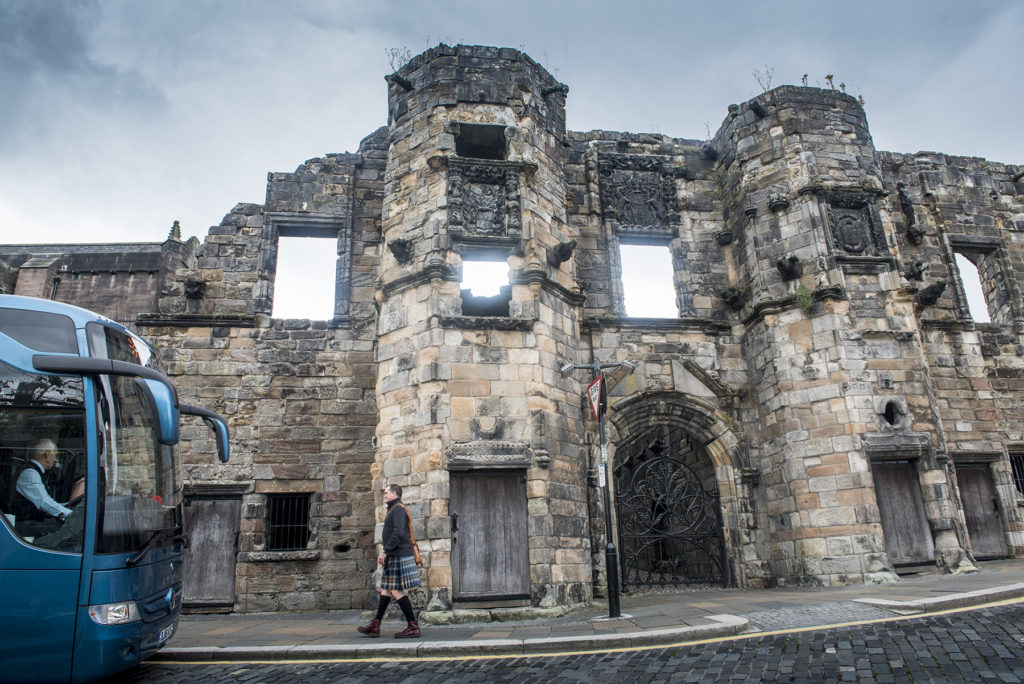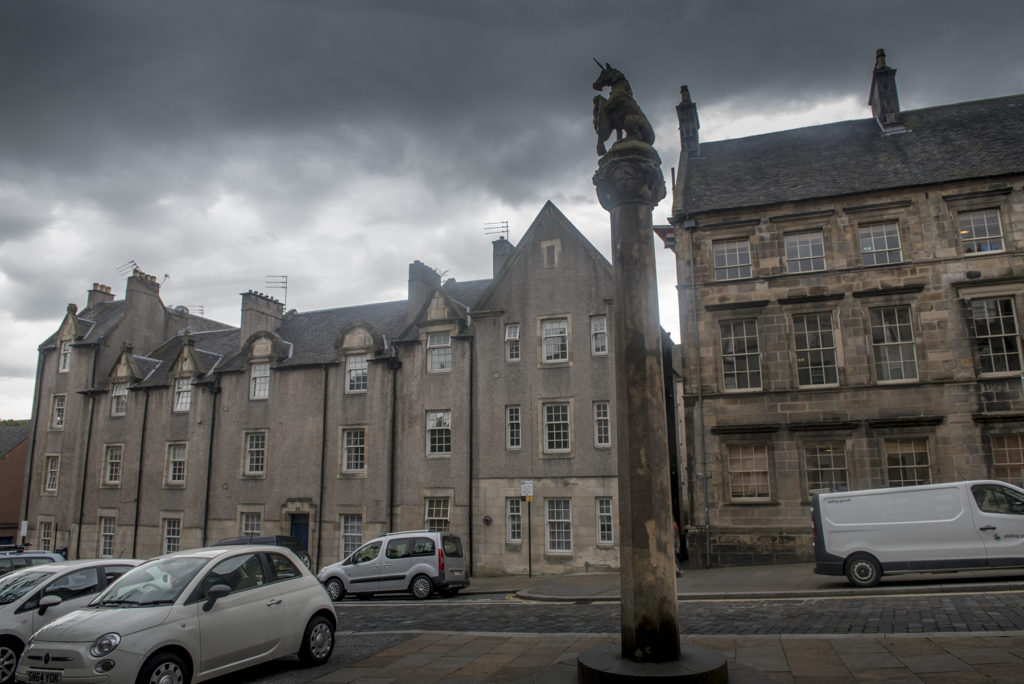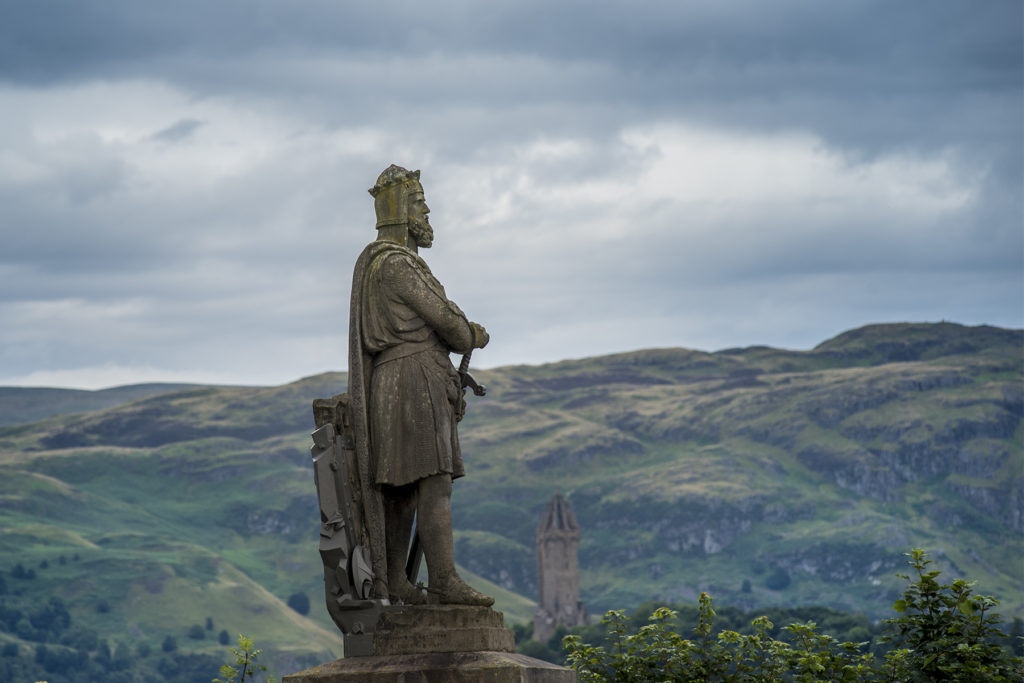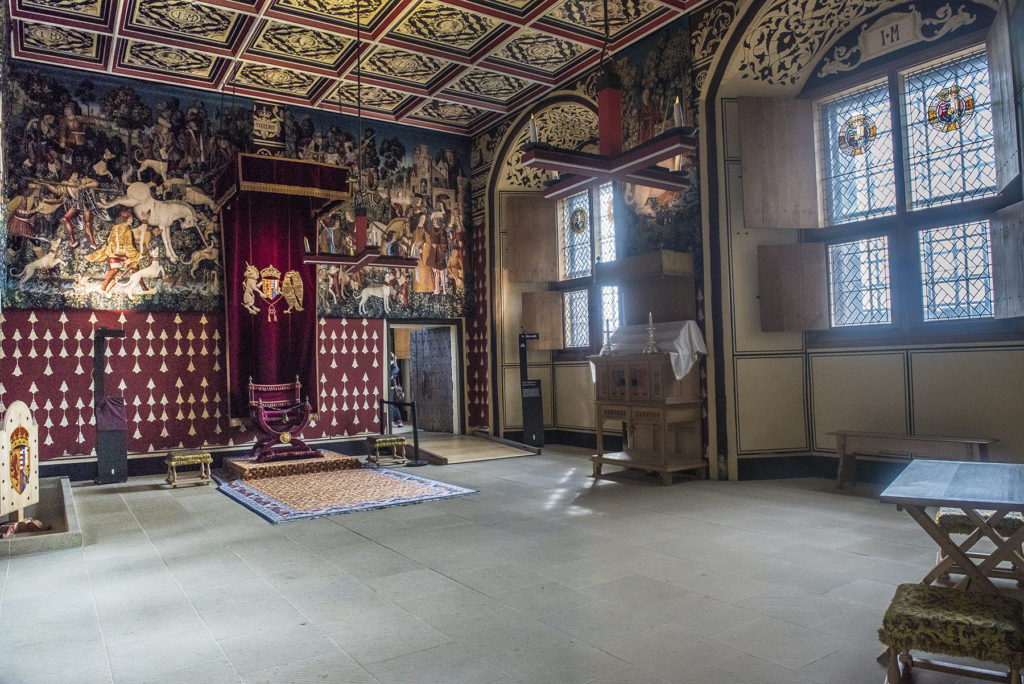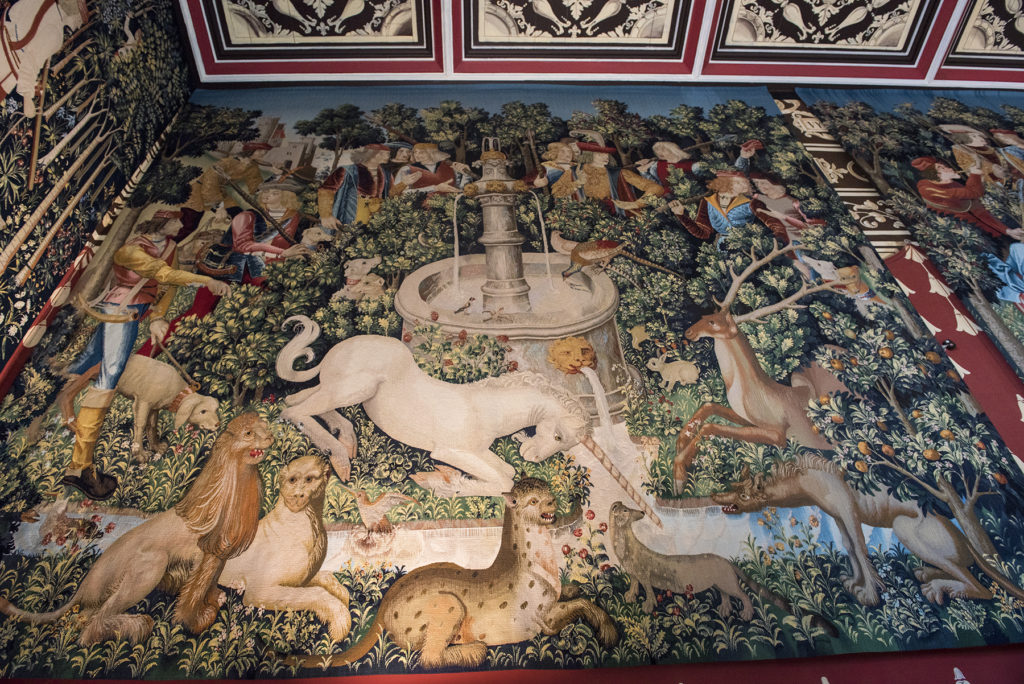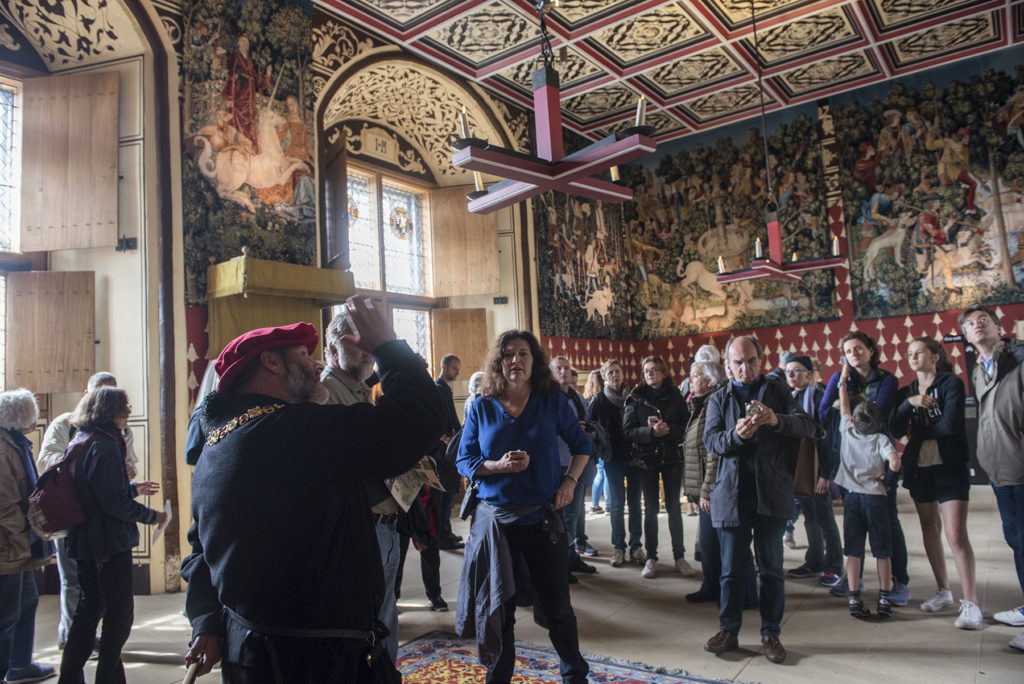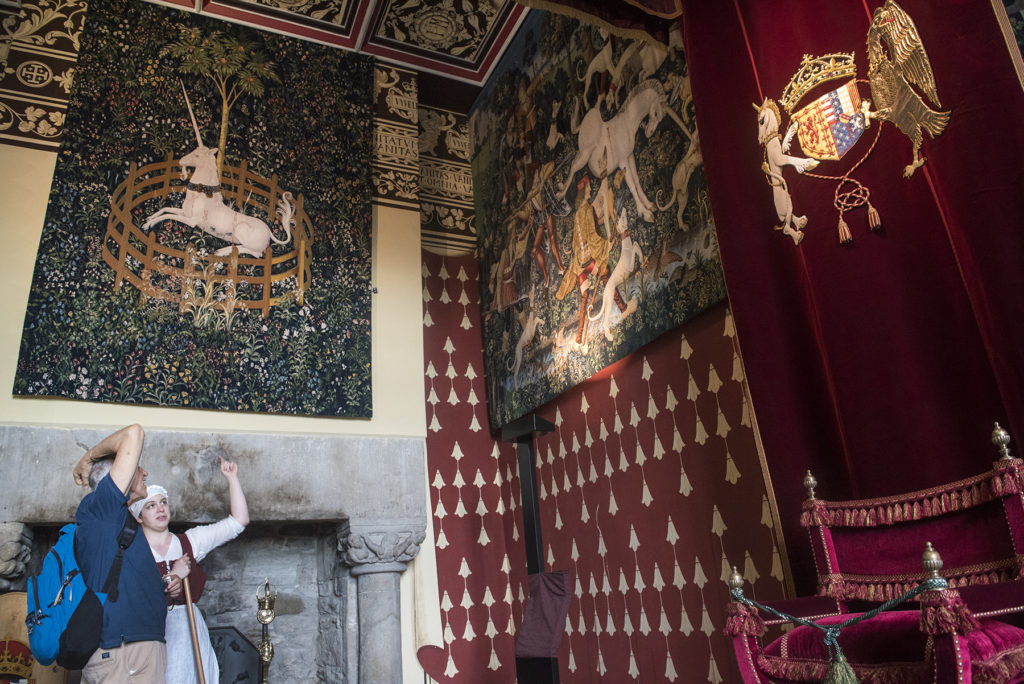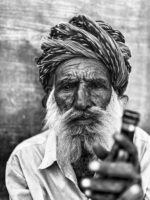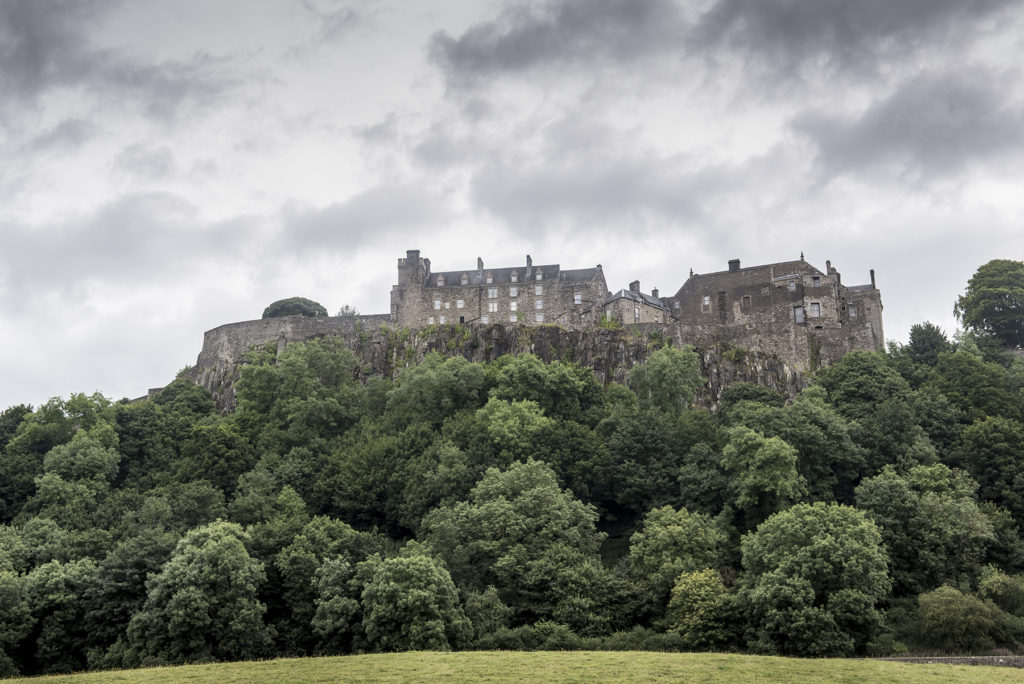 Scotland’s Stirling Castle
Scotland’s Stirling Castle
History, woven
Published in Montecristo Magazine
Stirling Castle in Scotland is built upon a large volcanic rock above the River Forth, considered the natural meeting point between the Lowlands and Highlands of the country. Two of Scotland’s most well-known battles took place in this area: the Battle of Stirling Bridge in 1297, when William Wallace defeated the English; and the Battle of Bannockburn in 1314, when Robert the Bruce and his soldiers prevailed over the much larger English army. Stirling Castle has a tumultuous history; it has been under siege at least eight times, survived numerous fires, seen many kings and queens crowned, and even witnessed the murder of William Douglas, 8th earl of the line, by King James II, in 1452.
It was in the time of James V that the castle went through a period of stability, and the king brought to life his vision to create a vibrant and cosmopolitan royal court. James V and his French wife, Mary of Guise, constructed the Royal Palace with magnificent apartments and lavish interiors. Inventories from the 16th century show the many tapestries, furnishings, and costumes that would have existed. James V owned more than 100 tapestries; there is no record as to how these great works disappeared.
Historic Scotland decided to recreate a series of tapestries for the Royal Palace as part of an initiative to refurnish the castle as it was in the 16th century. An international search led Historic Scotland to a series of original 15th-century Flemish tapestries called The Hunt of the Unicorn at the Metropolitan Museum of Art in New York, and so, a recreation began. It is considered the largest tapestry project undertaken in Great Britain in the past century, spanning 14 years and costing about two million pounds.
The final tapestry in the series of seven is The Mystic Hunt of the Unicorn, and Vancouver’s own Ruth Jones was its head weaver. She wove the maiden based on evidence from another artwork that included a bit of sleeve and a hand on the unicorn’s neck; the maiden’s face was inspired by Italian Renaissance portraits. Jones went to France to study a specialized skill called faiseur de chair, which means “maker of flesh,” to create the maiden’s face.
Stirling Castle is surrounded by several major historical sites. There is the Battle of Bannockburn Experience, where Robert the Bruce’s battle against the English can be relived; tourists can also climb to the top of the National Wallace Monument or wander through Loch Lomond & Trossachs National Park. And of course, they can enter the castle and view the finished tapestries, hanging grandly on the walls.

